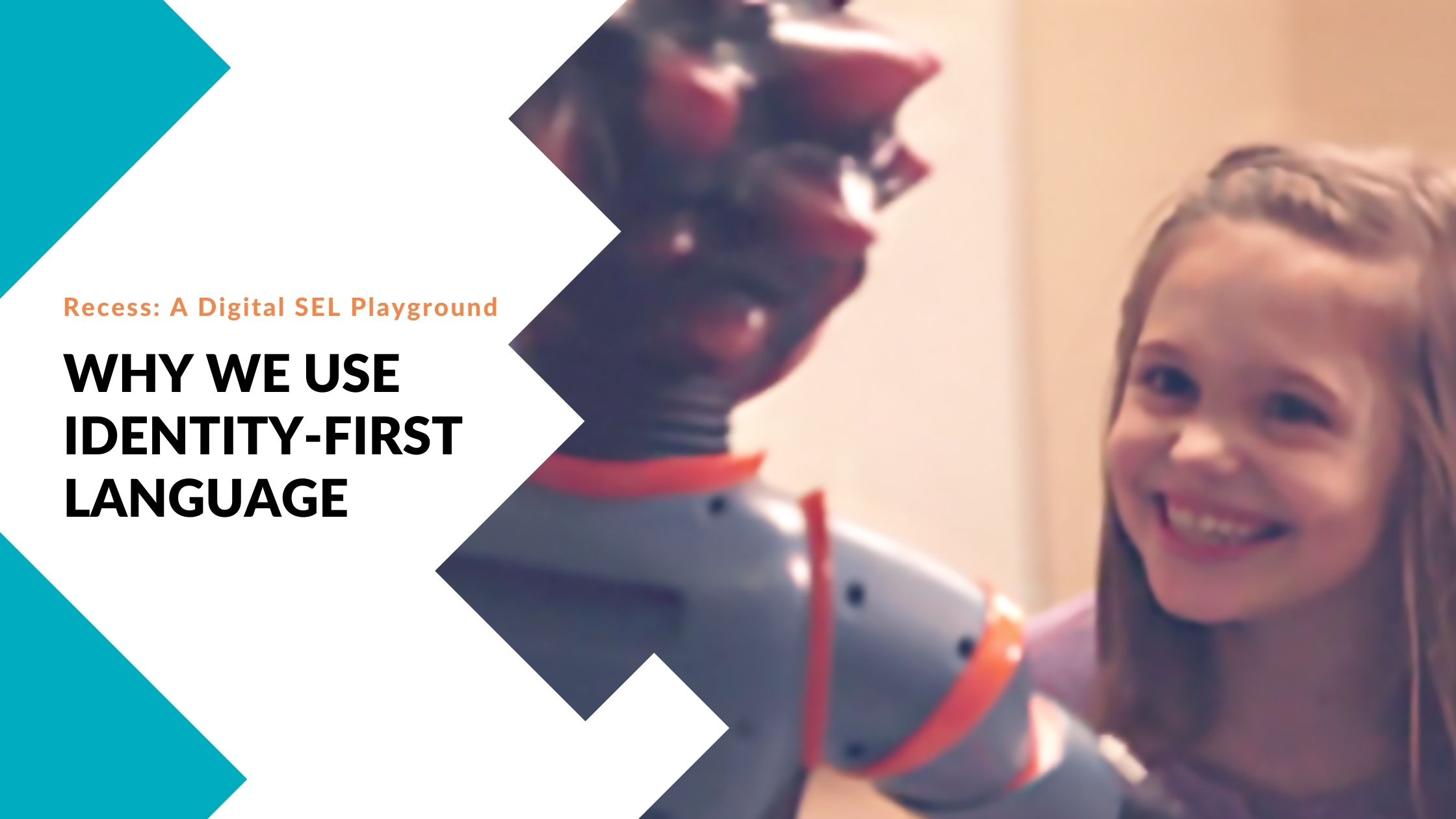Today, Daniel Lance, an autistic team member and Content Developer at RoboKind, discusses his perspective on the debate between person-first and identity-first language, and explains why we choose to use identity-first language.
Words have the power to lift us up.
They give us the courage to move through our day with confidence and peace.
Unfortunately, words also cut us down, deep to the bone, ruining our day. They make us want to take a stress nap.
Growing up, I experienced the subtle (and not so subtle) impact words have on my confidence, motivation, and desire to comfortably engage and interact with those around me. Identity-first and person-first language plays a key role in that. This is a frank discussion on the differences and impact of each.
What is the difference between identity- and person-first language?
It's a question I get a lot, and for most neuro-typical people, it's a hard concept. While I can't speak universally on the topic, I can imagine there exists wide-reaching similarities between how other groups view, describe, and feel about each.
Simply put, the key difference between identity-first and person-first language lies in how one relates a person (e.g. me) to Autism Spectrum Disorder (ASD).
Person-first language describes the person as having autism. "Daniel is a team member with autism." Or, "RoboKind builds technology for students with autism." The thinking goes that the emphasis lies with the person, not ASD.
Identity-first language flips the structure, placing emphasis on autism as a clear descriptor of the person's identity. "Daniel is an autistic team member." Or, "RoboKind builds technology for autistic students."
Is there a right answer?
When we think about identity- or person-first language, we must remember that not everyone agrees or prefers (although many autistic individuals do) one over the other, for many reasons. Importantly, each autistic person is unique, experiencing and engaging with their families, friends, and communities in unique ways. We must recognize that words, their meaning, structuring, and use, impact autistic individuals differently.
Personally, and from my experience, people within and those surrounding autistic communities prefer identifying language.
As mentioned previously, there is no true or correct answer, and it is important to take a look at both sides of the debate.
Supporters of person-first language argue that person-first language acknowledges the individual first and above all else, putting the person before the disability.
Opponents of person-first language claim the concept demeaning, and implies that a person only has value when you separate them from their disability. In essence, it treats a person's disability as something that can, and should, be wholly separated from the individual.
Those in favor of identity-first language see it as a way to empower the individual and recognize the totality of the person. According to Lydia X. Z. Brown,
“It is impossible to affirm the value and worth of an Autistic person without recognizing his or her identity as an Autistic person. Referring to me as ‘a person with autism,’ or ‘an individual with ASD’ demeans who I am, because it denies who I am.”
Which Does RoboKind Support?
Robokind represents a small, but meaningful part of the larger conversation surrounding Autism, Autism communities, and education. What we say and how we say it affects how we are viewed by those we serve and those who look to us as an authority on ASD. As a company specializing in Social Emotional Learning (SEL) specifically for autistic students, we never want our work to perpetuate negativity or harmful narratives toward the community we serve.
Using identity-first language is more inclusive. This language speaks to the whole person, recognizing all of their struggles and their skills as valid. And when we recognize this, we are emphasizing that SEL is not about teaching these students to be "less autistic", but about equipping them with the tools and confidence they need to successfully navigate school settings or other social environments.
With person-first language, you do not always get that. Person-first language identifies that the autistic person is indeed a person, while simultaneously "othering" a part of them. It teaches that their differences are something to feel shame about and hidden away.
Speaking for myself, I prefer identity-first language. Institutional use of person-first language can feel clinical. Like it further distances an autistic person from a part of who they are. In my opinion, person-first language in this context can feel like masking. Like you need to put as much distance between ‘person’ and ‘autism’ as you can if you want to live a fulfilling life...which is not the case.
Identity-first language helps to de-stigmatize being an autistic person. It helps people feel comfortable asking for accommodations or anything else they may need to find equitable ground and reach their full potential. As such, RoboKind is fully adopting identity-first language.
For more information, please see the Autistic Self Advocacy Network’s statement on Identity-First language here: https://autisticadvocacy.org/about-asan/identity-first-language/

